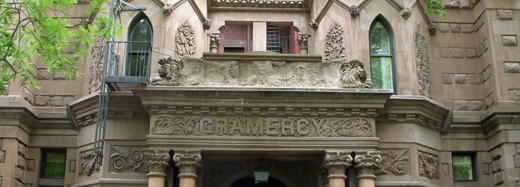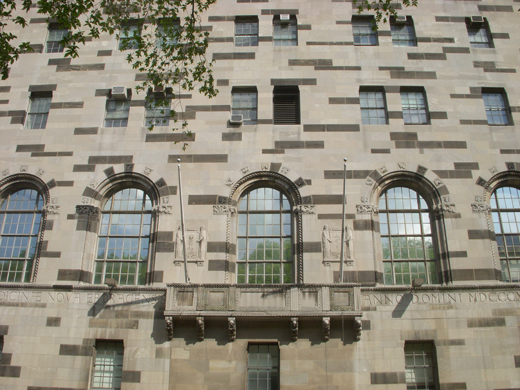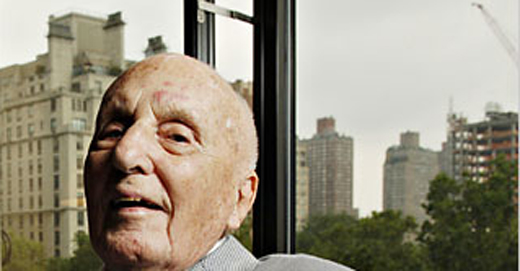
In the kitchen, I’ve been watching Woody Allen’s Manhattan. What this means is that the little TV/DVD player in the kitchen gets paused a lot, while I go off to do something else — sometimes for hours. (I turn the machine off overnight, and it picks right up when I turn it back on.) It’s a very personal way of watching movies, and, to tell the truth, “watching” doesn’t come into it much. It would be better to say that I listen. With vintage Woody Allen, needless to say, this works very well; the jokes don’t seem as appliquéd to the cinematic texture — which, in Manhattan, is extraordinary.
Manhattan is one of the three pivotal movies that Mr Allen made in the late Seventies; Interiors and Stardust Memories are the others. All three are unrestrained imitations of movies by Fellini and Bergman. Not imitations of particular movies, and not imitations in the cheesy “bad” sense, but imitations in the old classic sense, as in “Imitation of Horace” (a poem in the style of Quintus Horatius Flaccus). Visually, they are all extremely successful; dramatically, the tension between the intense look and feel that Mr Allen adopted from the Europeans and the cheeky dialogue of the two black-and-white films is difficult for some Allen fans, while the way too serious, out-Bergmaning Bergman tone of Interiors dares viewers to be bored. Neither Manhattan nor Stardust Memories, however, is an overlooked stepchild.
The grandeur of Manhattan owes a great deal to a third partner: in addition to the great screenplay (written with Marshall Brickman) and Gordon Willis’s gorgeous cinematography, the music is by George Gershwin, and I wish I could say who orchestrated it. (The selections all seem to come from the overtures to Gershwin’s Broadway shows.) What Tchaikovsky and Rachmaninoff did for an idea of old Russia, Gershwin does for the New York City that still existed in 1979. Mr Allen’s virtuoso use of some of Gershwin’s most romantic tunes, especially as hymns to the sweetness of the young Mariel Hemingway, is just about operatic.
But even though nothing visual about the film is particularly jarring to anyone familiar with today’s city — the cars look a bit out-of-date, but then cars always do — the feeling of everything is somehow different. The Manhattan of Manhattan is a more innocent, more integrated, and strangely less self-conscious place. Manhattan was the first movie to make the visual proposition that New York City is the sophisticated equal of London, Paris, Rome, and the other great capitals that Americans are too provincial to know about. It was a new idea in 1979, and very exciting. Woody Allen made a persuasive case. Nowadays, though, it’s hard to believe that the argument ever needed to be advanced.
Kathleen and I saw Manhattan when it came out — in South Bend, Indiana, where we were finishing up law school. The following year, Kathleen would take a studio apartment in the building that we live in to this day. The fact that we have stayed put has only made the city’s changes more obvious. To mention just one dossier: when we arrived, Eighty-Sixth Street was still the main street of the old Germantown, lined with restaurants such as the Ideal and the Kleine Konditorei. The Old Dutch delicatessen had a sign in the window: “this is NOT a kosher delicatessen.” (Or words to that effect.) For a long time afterward, the space was occupied by a kosher delicatessen. Now, it’s a bakery.
The interesting structure that the German department store, Bremen House, built for itself in the Eighties is now a Pizzeria Uno. (Some of us remember the day that Bremen House didn’t open. It never really closed.) Next door, the tenants at the Ventura apartments must be very unhappy, because all of the building’s vast retail space is vacant. Circuit City was in the basement, and Barnes & Noble has consolidated at a new location nearer to Lexington Avenue. That’s a lot of dried-up revenue stream! Such worries were unknown in 1980.
Come to think of it, thirty years is the life span of most traditional mortgages: a long time in anybody’s book. If I had watched a thirty year-old movie when my daughter was born, it might well have been The Palm Beach Story. Yikes! I wasn’t thirty years old at the time, and PBS might as well have been scripted by Aristophanes as by Preston Sturges — if I’d known about it, which I didn’t. (As it happened, though, I was mad about some movies that were pushing forty, all starring Fred Astaire.) Manhattan, at whatever age, will retain the poignance of having captured New York as it was when I came back to the town I was born in.
I’ll close on a dark note. I’m not entirely sure, but I believe that, in the montage that introduces Manhattan, not one of the loving scenes of the city shows the World Trade Center. I am almost certain that the WTC does not appear in the movie at all. That is very much how we felt about those towers, not just in 1979, but, even more strongly, when they were built. I wonder if, thirty years from now, anyone will remember how deeply New Yorkers felt that a pair of unimaginative spindles had let them all down. Not to mention how we felt, very quietly, later on.




















